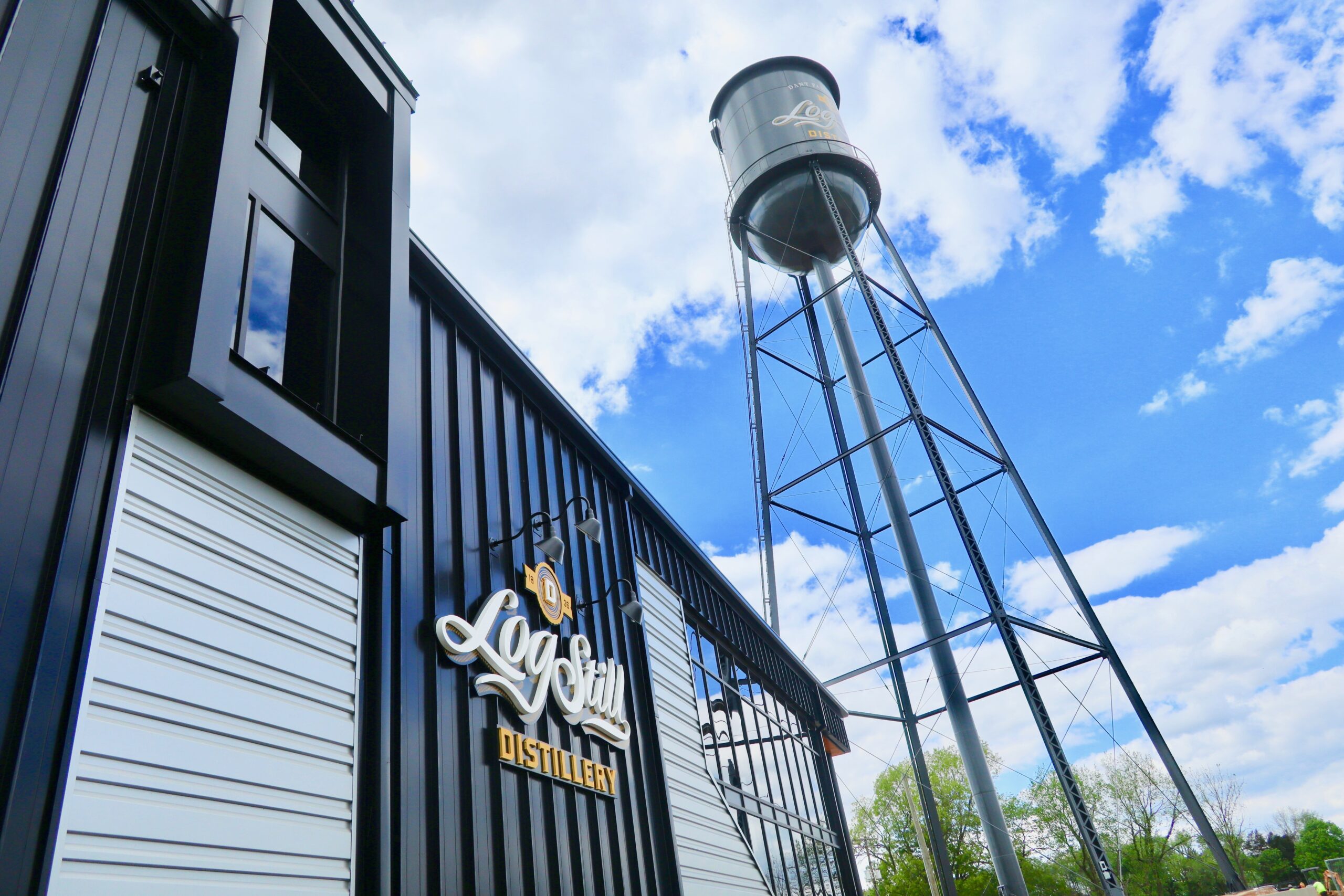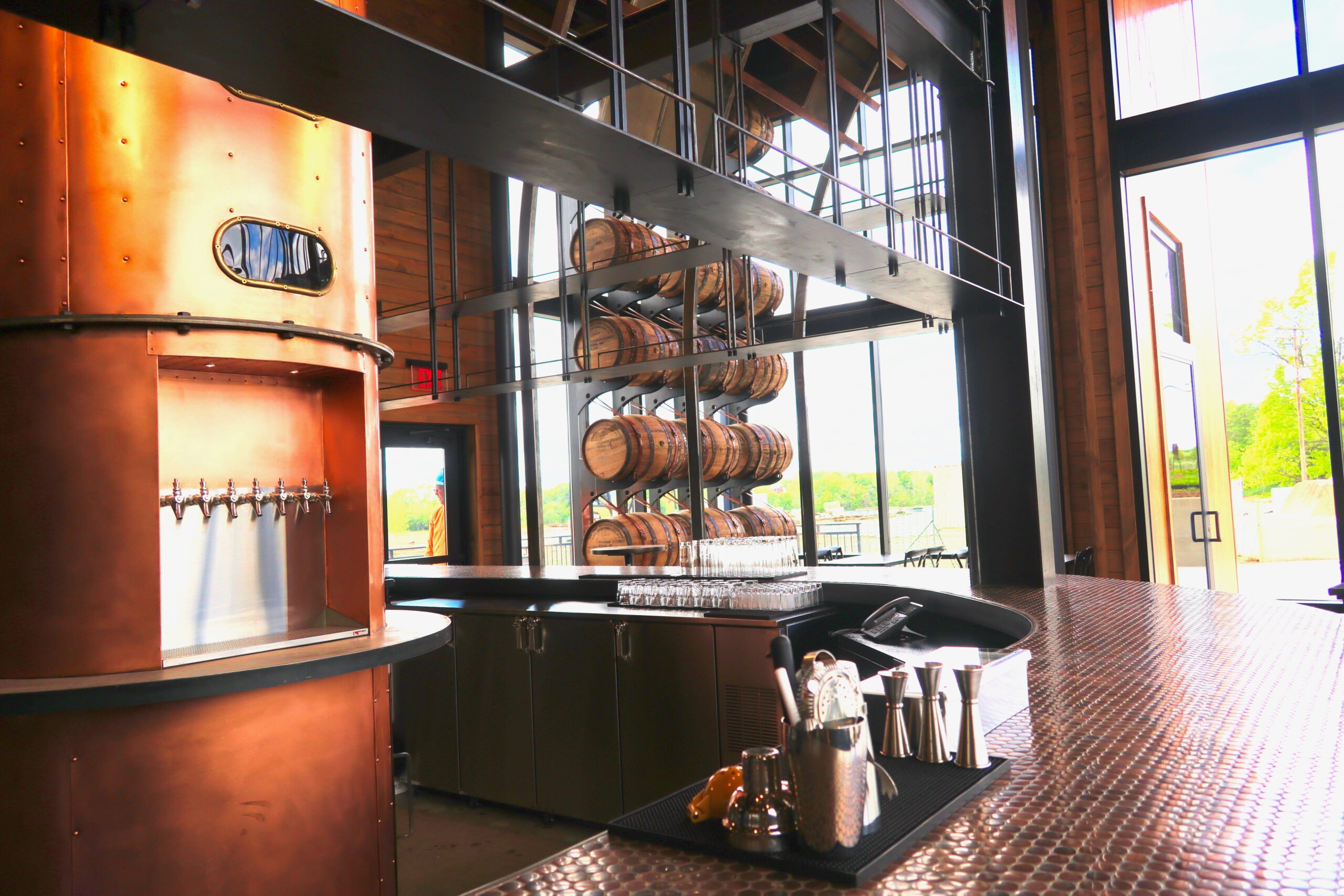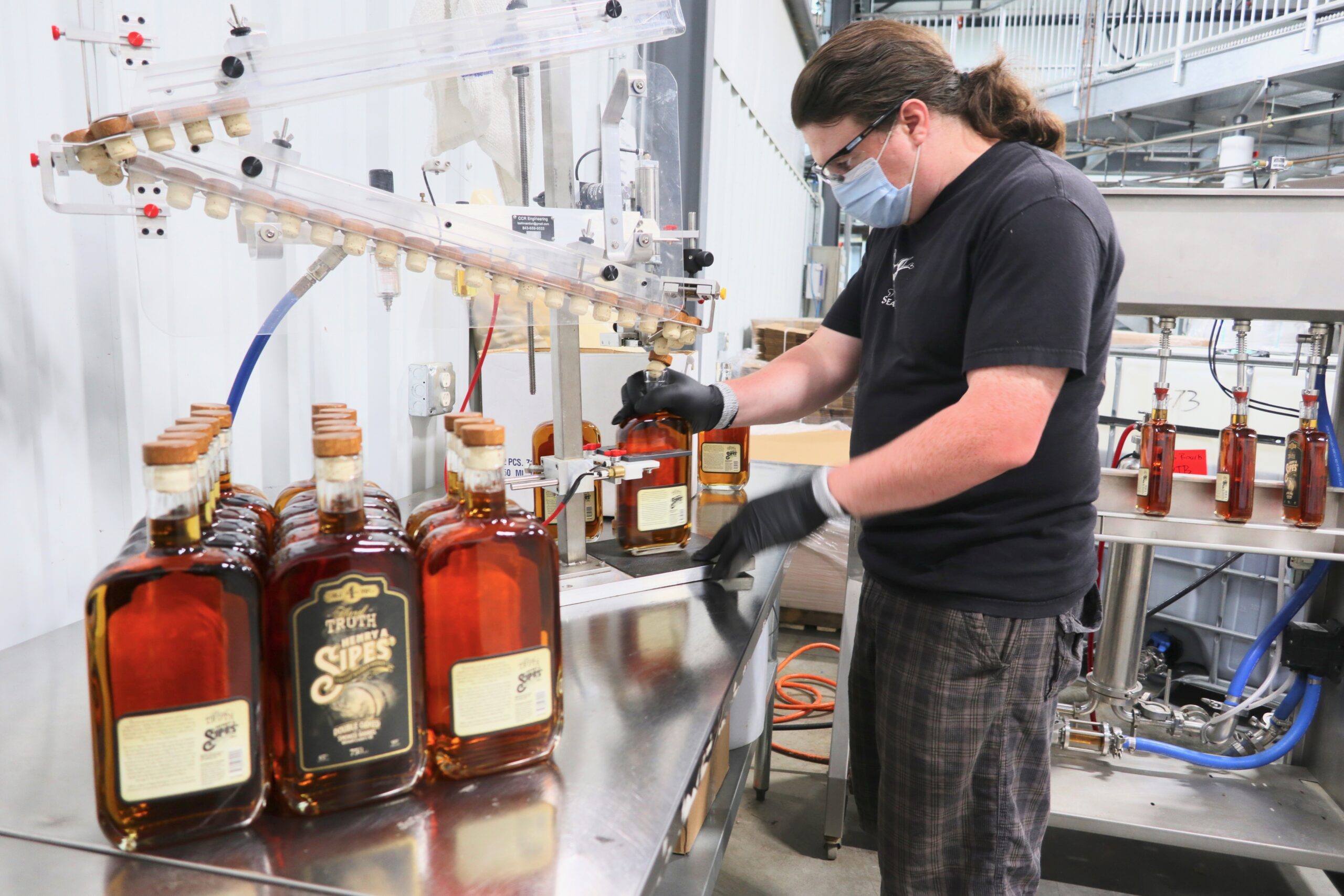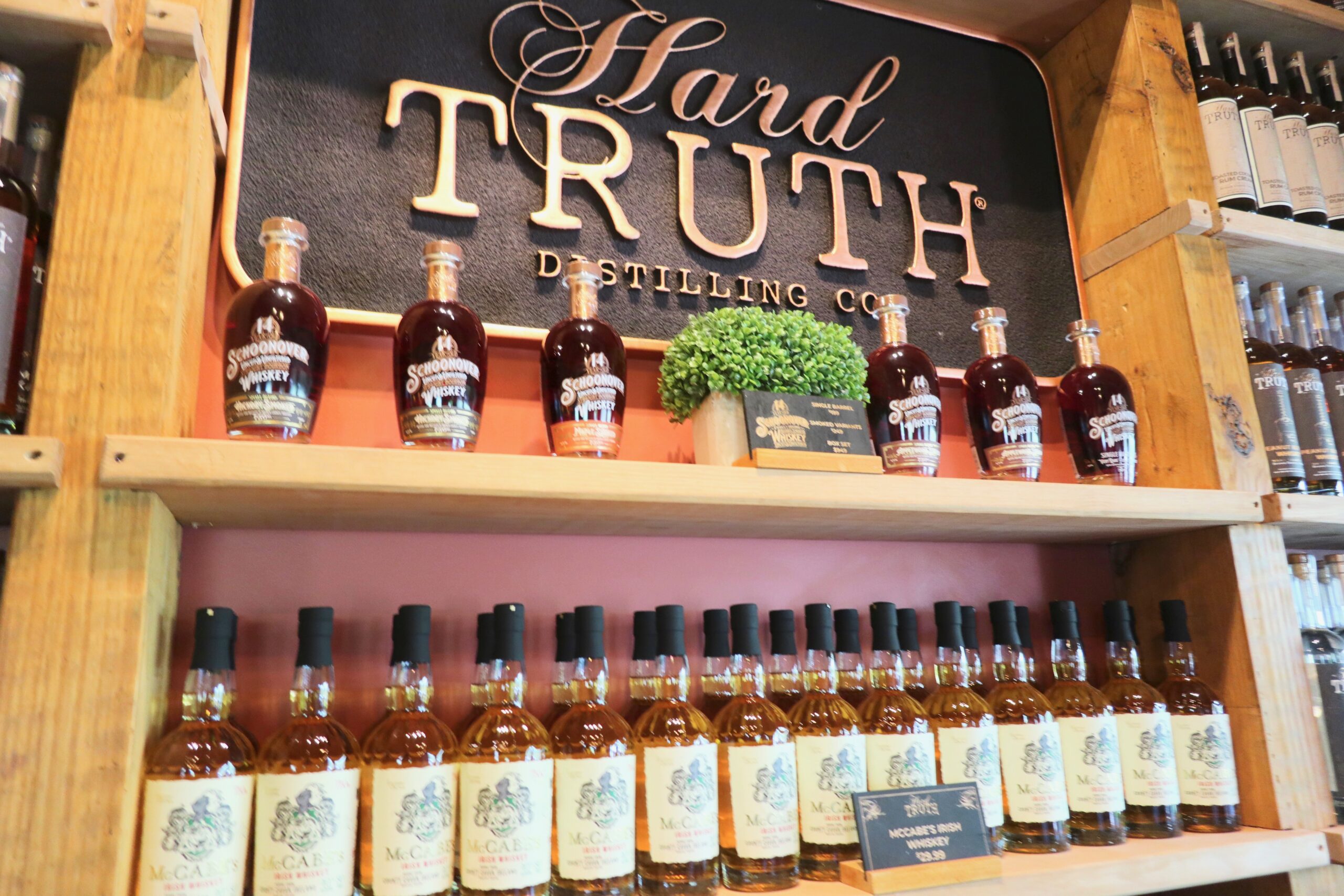
making Kentucky bourbon since 1936. (Photo/Keith Schneider)
GETHSEMANE, KY. – Conditions last year could hardly have looked worse for craft distilling in Kentucky or any other state. Built on the intimacy of locally-produced spirits, virtually all of the more than 2,000 craft distilleries that operated around the country were imperiled by state health directives that closed tasting rooms.
Yet while the virus produced financial pain, it did not lead to many distillery deaths. Federal pandemic-related aid, consumer demand, important changes in state distribution regulations, and a reduction in federal liquor taxes converged not only to prevent failures, but actually led to more growth. The American Craft Spirits Association, a trade group, found in its annual 2020 report that the number of craft distilleries climbed to 2,265 last year, a nearly 11 percent increase. Annual national sales reached $6.1 billion in 2019 and are expected to have increased in 2020.
Here in the Knob Hills of central Kentucky, the industry’s resilience was celebrated last month when one of the state’s most prominent bourbon-making families opened the tasting room of the Log Still Distillery, the state’s newest craft distillery.
With its big glass windows and views of expansive farm fields, the 4,600-square foot tasting room has attracted more than 2,000 customers in its first month. John Wallace Dant 3d, whose family first distilled whiskey in a poplar log seven generations ago in 1836, anticipates hundreds of thousands more.
That’s because the distillery is more than an emphatic statement about the economic virtues of good liquor, inviting design, and entrepreneurial ingenuity that has distinguished craft distilling since it really took off in the United States a decade ago when craft distilleries numbered less than 300. As the centerpiece of Dant Crossing, a $30 million recreation, food, lodging, and entertainment destination on 350 acres of Nelson County’s finest forest and farmland, the Log Still Distillery is setting new trends in the business, say industry authorities.

for the Log Still Distillery tasting room. “After 14 months of a pandemic I think we all can.†(Photo/Keith Schneider)
When it is completed next year, Dant Crossing will encompass a 7,300-square-foot restaurant, a 22,000-square-foot events venue, bed and breakfast lodging, a 2,000-seat amphitheater, a trail around a 12-acre lake, a station stop for a scenic rail line, a 21,000-square foot distillery capable of producing 15,000 barrels of bourbon annually, and rickhouses to store barrels of the family’s Monk’s Road bourbon (named for the road that leads to the distillery from the 173-year-old Abbey of Gethsemani here, the Cistercian monastery of Thomas Merton fame). Mr. Dant, the president, anticipates hiring 130 people.
Call it a whiskey resort dedicated to drinking, eating, and hanging out. “It’s the first like it in Kentucky with this vision and scale,†said Seth DeBolt, director of the James B. Beam Institute for Kentucky Spirits at the University of Kentucky. “Making bourbon. Drinking bourbon. Staying overnight. Going to a concert. A handful of others are moving in that direction to capture an experiential opportunity around this space.â€
Or as Kentucky’s Governor Andy Beshear told a small gathering at the May 11 ribbon cutting, “If I’ve been waiting for anything it’s a family friendly destination where I can also enjoy bourbon,†said the first-term Democrat. “After 14 months of a pandemic I think we all can.â€
Though there is no federal definition, and states differ in their guidelines, craft distilleries are generally distinguished by 1) producing on-site smaller batches of bourbon, vodka, gin, and other spirits than commercial distilleries, and 2) selling them at premium prices in and outside of tasting rooms.
When it started last year, no one knew how much damage the pandemic would cause to the sector, which employed 40,000 people. The revenue numbers were worrisome. Liquor production typically provides half or more of annual revenue. The Distilled Spirits Council of the United States, a trade group, reported that craft spirits sales dropped $700 million in the first six months of 2020, a 41 percent decline.

Almost half of the distilleries lost at least a quarter of their sales. The Distilled Spirits Council identified 8 craft distilleries in as many states that closed.
But many craft distillers in the other half reported having a highly profitable year in part due to assistance from the federal and state governments. Federal pandemic rescue bills in 2020 and 2021 helped. In interviews, distillery owners said Paycheck Protection Program loans and other aid t0 businesses kept core production and marketing staffs in places. After years of consideration and debate, Congress approved legislation that helped small producers by lowering the federal tax for the first 100,000 gallons of alcohol from $13.50 per gallon to $2.70.
Kentucky permitted craft distillers to ship directly to customers. New York and seven more states approved temporary measures to make it easier for craft distillers to market their spirits to consumers, bypassing stricter licensing and distribution requirements that had been in place since the end of Prohibition in 1933.
Challenged by the virus, and assisted by the government, craft distillers developed ingenious pandemic business strategies to not only survive, but thrive. In many instances, craft distillers reported record revenue in 2020. In effect, the pandemic and government’s response to it prompted some of the most significant changes in alcohol production and distribution ever in the United States.

Everybody has a story. In northern Michigan, Iron Fish Distillery in Manistee County received a $130,000 PPP loan to cover operating costs for three months. It also spent $30,000 to move retail sales of spirits and food from the tight quarters of its tasting room to tents and fire pits outside. One of seven craft distilleries in the region around Traverse City, Iron Fish is located on a 120-acre farm that harvests wheat and rye for its labeled whiskies. The $2.5 million project started with a 4,800-square-foot distillery, renovating a barn for an event venue, oak barrels that cost $300 to $500 each, and equipment to run the farm.
The switch outdoors produced the five-year-old distillery’s strongest annual sales. “Our guests loved it,†said Richard Anderson, chief operating officer and one of the distillery’s four founders. “At night in the winter they were outside, drinking bourbon, staying warm, looking at the stars.â€

In western Kentucky, Thomas Bard and his wife, Kim Bard, paid $45,000 in 2015 for the three buildings of the long-shuttered 60,000-square-foot Graham High School in Muhlenberg County into The Bard Distillery, a $5.2 million craft distillery, tasting room, and event venue.
In December 2019, the couple opened the tasting room in the nearly 90-year-old school building. In March it closed under state order. A federal disaster loan and a separate federal restaurant revitalization grant paid expenses and enabled the couple to market their branded Cinder & Smoke Bourbon and Muhlenberg line of whiskies and liqueurs.
The tasting room reopened in June and the event venue is scheduled to open in the fall. “In a way we were lucky,†said Mr. Bard. “We bootstrapped most of our project, so we hadn’t yet taken on a lot of debt or overhead expenses.â€
The newest trend in craft distilling is allegiance to the get-big-or-get-out business strategy. Hard Truth Distillery, in Nashville, Ind., is a $25 million, 325-acre, three-year-old distillery that includes a tour center, tasting room, restaurant, outdoor amphitheater, event venue, and rickhouses for its rye whiskey and bourbon barrels. A $1.2 million rickhouse, a smokehouse, and a larger amphitheater are under construction. An 80-room lodge is planned.

By expanding its outdoor seating spaces, Hard Truth served 400,000 customers in 2020, 100,000 more than in 2019, said Jeff McCabe, one of the distillery’s four partners. “One objective is for our distillery to be a destination for our brand,†said Mr. McCabe. “Experiences are fundamental to establishing our brand identity.â€
Log Still is another craft distillery that thinks big. Mr. Dant, the president, noted that Maker’s Mark, one of the 18 commercial distilleries on Kentucky’s famed Bourbon Trail, the heart of the state’s nearly $9 billion bourbon industry, is up the road six miles away and attracts more 100,000 visitors annually.
Kentucky tourist agencies also promote a bourbon trail for 19 craft distilleries. Mr. Dant plans be the trail’s 20thfeatured distillery. “When it comes to bourbon in this part of Kentucky, all roads lead to the same destination,†he said. “We think we’re in the right place.â€
— Keith Schneider
A version of this article was posted by the New York Times on June 22, 2021.

